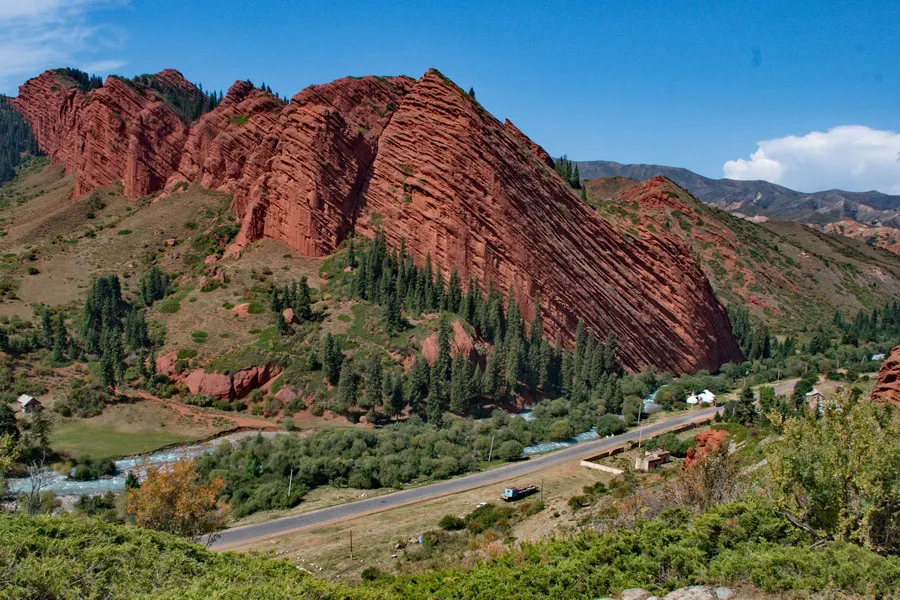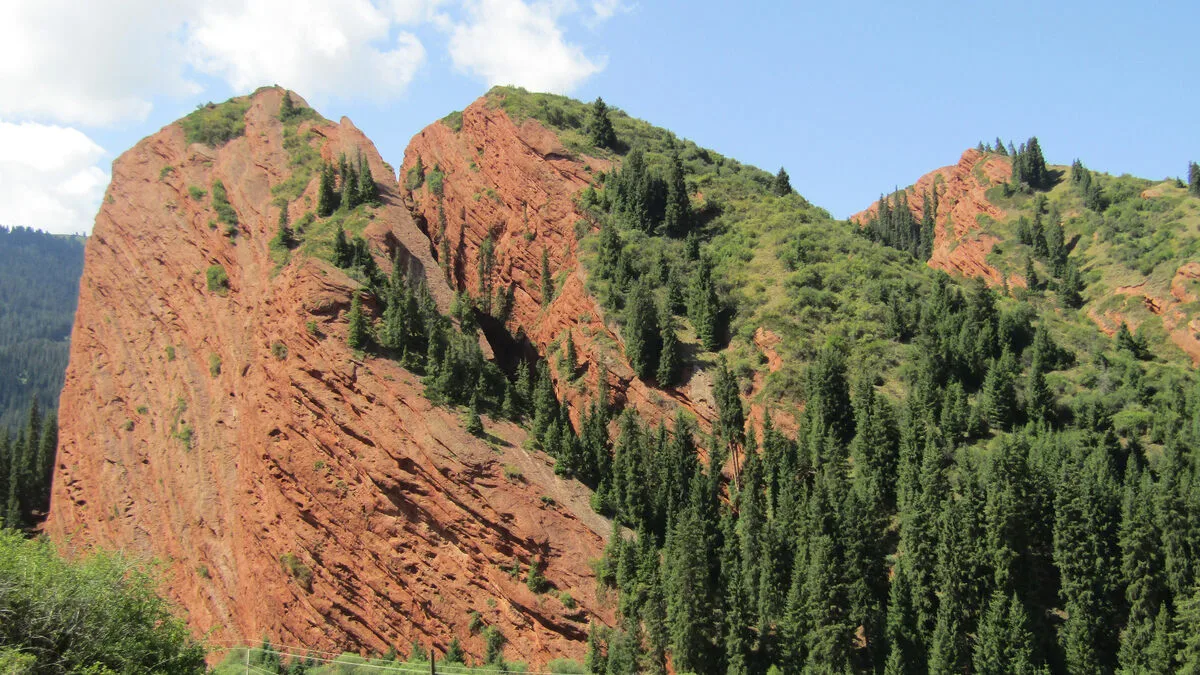The Jeti Oguz Rocks are a sandstone formation located about 25km (15 miles) southwest of Karakol. The name means "seven bulls" and comes from the fact that the rocks look like seven bulls.
The Jeti-Oguz rocks formation is protected as a Natural Monument.
 |
| Jeti Oguz Rocks |
There is a legend about how this rock formation originated. In ancient times, two kans lived in the vicinity of the place. One of them had a beautiful wife, and the other Khan kidnapped her. When the husband demanded the return of his wife, his enemy planned a terrible atrocity. He decided to give a great banquet that would last seven days. Every day he killed a large bull and on the last day he killed the captive wife with his bare hands. Blood gushed from the woman's wounds and where the drops fell, seven red rocks appeared, Jeti-Oguz.
 |
| Jeti Oguz Rocks |
As you approach Jeti-Oguz there is another rock formation that resembles a broken heart. Another legend tells that this is the heart of a beautiful woman, who died when her heart was broken after two suitors killed each other fighting for her. These two rock formations have become symbols of the Issyk-Kul region and are the favorite images for photographers and painters.
 |
| Jeti Oguz Rocks |
In the village, there is an old cemetery and some burial mounds dating from the 7th to 5th centuries BCE. They have a diameter between 16 and 28 meters (52 and 92 feet) and 1.7 to 3 meters (5.5 to 10 feet) in height, although they used to be larger. Not far up the valley is the Jeti-Oguz Sanatorium, built in 1932. This sanatorium was the site of the first meeting between President Akaev and Yeltsin in 1991, after the unsuccessful coup in Moscow.
 |
| Jeti Oguz Rocks |
About 5km (3 miles) south of the Jeti-Oguz Sanatorium is Dolina Svetov (the Valley of Flowers), a valley that is teeming with poppies and other flowers from May until early summer.